
Active Sleepers
Written by Marybeth Luczak, Executive Editor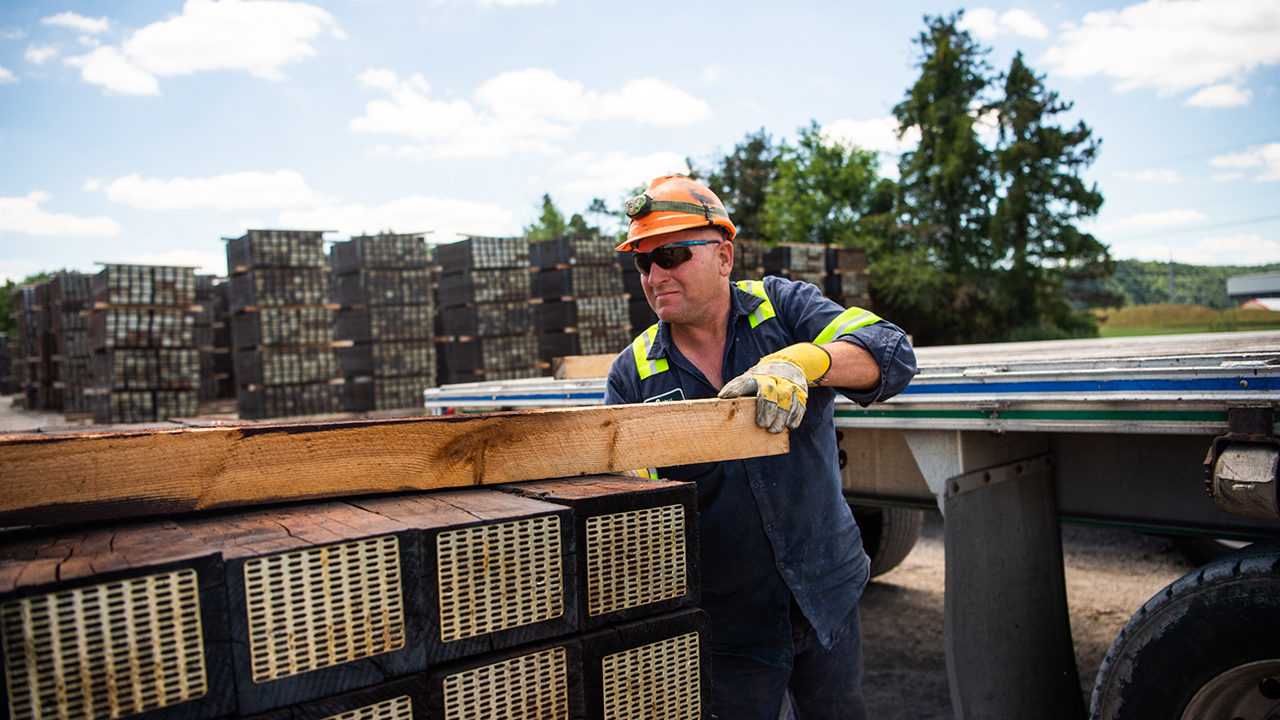
Koppers treated crossties. (Koppers Photograph)
RAILWAY AGE, APRIL 2023 ISSUE: Foundational to the freight and passenger rail network, crossties handle pressure from all sides—from train weight to Mother Nature.
Crossties not only support rails and high-tonnage trains, transferring weight to the subgrade, but also perform under extreme weather conditions and help hold gauge over time with proper maintenance, treatment and restoration. Traditionally made of wood, the tried-and-true mainstay, crossties produced from concrete are common in high-speed rail and transit applications and on heavy-axle-load freight railroads with steep grades, sharp curves and high annual gross tonnage. Ties produced from composites, plastics or steel are available for specialized applications.
The following suppliers provided Railway Age with insights on the 2023 market, plus updates on their products and services.
Arxada
Arxada offers Chemonite® ACZA to treat and extend crosstie life. Its bonds are leach-resistant, and the wood surface remains “non-oily and clean-to-the-touch,” even in high temperatures or when exposed to salt water, according to the manufacturer. A treatment mixing Chemonite® ACZA and borates is also available. “Like ACZA, borates have a long history of effective decay prevention,” Arxada says. “They have been used for decades to supplement other preservatives in protecting hard-to-treat species of wood in heavy-duty industrial environments. The borates diffuse deep into these species, protecting inner areas that might otherwise be vulnerable to decay when exposed by cracks or wear. Borates also inhibit corrosion, enabling spikes to maintain their integrity for a longer period of time and thus hold gauge longer.”
Marketing Professional Belinda Remley reports that Arxada is continually innovating its products to prolong the life, and therefore the use, of wood. “We continue to study the performance of Chemonite® ACZA and Chemonite® ACZA plus Borate ties and are pleased with their longevity,” she says. “Currently, the entire wood industry has turned its attention to include engineered wood for mid-rise structures as well as assisting in maintaining our infrastructure.”
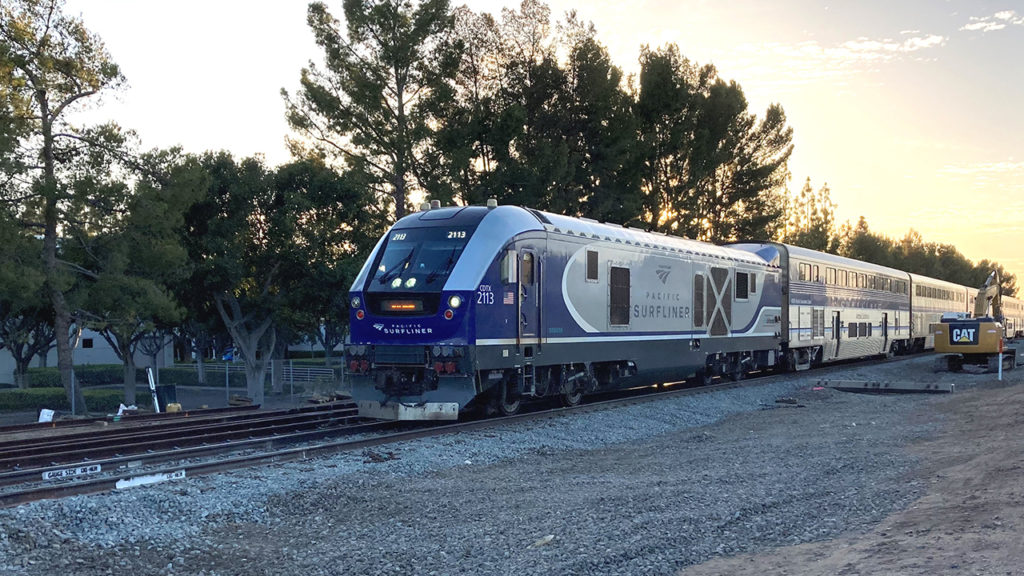
CXT/L.B. Foster
“After a steady increase in North American concrete tie manufacturing capacity over the past decade, followed by a precipitous drop in demand just before and during COVID, there is ample capacity for increased tie volumes to feed heavy haul, industrial and light rail construction projects,” Engineering Manager Vince Petersen tells Railway Age. “With West Coast transit finally starting to get back up to speed, especially in California, CXT sees opportunities for increased volumes ahead.”
Additionally, Class I yard modernization and expansion projects across the West “are breathing new life into industrial projects, a mainstay of CXT’s business,” he notes.
What are customers requesting most often these days? “Quite frankly, with recent inflationary pressures on every one of our materials and the tight labor market, customers are looking for cost-saving designs and proactive terms to hold firm their construction budgets,” Petersen says. “Taking advantage of the increased tie spacing allowed with concrete ties without sacrificing track strength has been a strong seller for CXT. Creative storage terms have enabled us to feed material to their project sites on an as-needed basis to help our customers maintain their project schedules and costs.”
CXT is currently partnering with fastener suppliers to introduce new heavy-haul rail fastening systems for concrete ties. “These new systems aim to reduce wear and degradation on polymeric fastening components from lateral forces due to faster train speeds and more tonnage to meet increasing traffic demands,” Petersen explains.
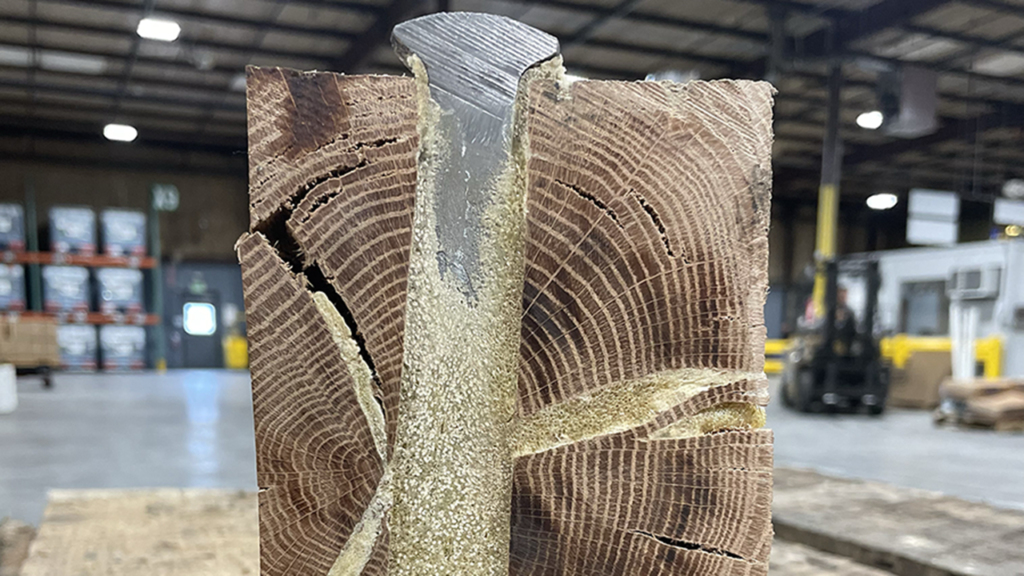
Encore Rail Systems Inc.
For nearly 20 years, Encore has helped railroads and contractors extend crosstie life, providing tie plugging equipment and compounds for wood and composite ties as well as concrete tie repair equipment and compounds. It offers more than 100 pieces of equipment for lease, with full field support and training, including ride-on, walk-behind and skid-mounted (portable) tie pluggers. Its most-often requested machine is the high-production ride-on, according to Charlie Briggs, Field Service and Sales Manager, because it gets “boots off the ground,” allowing one to two operators to work safely inside. Track-mounted and self-propelled, it is equipped with GPS for tracking. Additionally, Encore reports that the dual-dispensing, low-maintenance guns reduce cleanup time, and up to 250 gallons of tie plugging compound can be stored onboard. The ride-on for high-speed rail seat abrasion repair—also track-mounted and self-propelled—allows users to switch application guns for wood or concrete ties. Briggs says Encore is now updating its machines’ electrical systems to CAN Bus, and continues to focus on dispensing system updates to reduce maintenance and decrease downtime.
While Encore continues to build relationships in North America—including those with CN, Union Pacific, Ferromex and Canadian distributor Davanac Inc.—it is also eying international work, and partners with American Equipment Company, an export management company specializing in the sale of railroad equipment worldwide, according to Briggs.
Koppers Inc.
For crosstie and switch tie provider Koppers, product demand remains strong. “The hardwood market has relaxed as expected, and with increased purchasing power we are seeing a steady flow of raw material into our plants,” Director, Class I Sales John McDonald says. “The global coal tar market continues to face disruptions, putting pressure on pricing and availability to meet the demands of our industry. We see this trend continuing for the foreseeable future.” But as a vertically integrated supplier of both wood preservatives and treated crossties, he says, “Koppers is in the best position possible to creatively navigate through these challenges to meet customer demands.”
The company’s acquisition of Kirkwood, Mo.-based Gross & Janes in 2022 further strengthens that vertically integrated business model, providing “value to our customers by de-risking their supply chains for critical products,” McDonald points out. “The Gross & Janes network, assets and sourcing footprint is highly complementary to Koppers’ and aligns well with our long-term strategy. Maintaining a normalized inventory of high-quality untreated crossties will expand capacity and open new markets.”
Koppers is now in the final stages of commissioning a new treating plant in North Little Rock, Ark. Additionally, McDonald reports that “field research suggests that wood crossties treated with Koppers CPS (Creosote Petroleum Solution), through advanced treating technology and introduction of borates, is exceeding life-cycle performance expectations.”
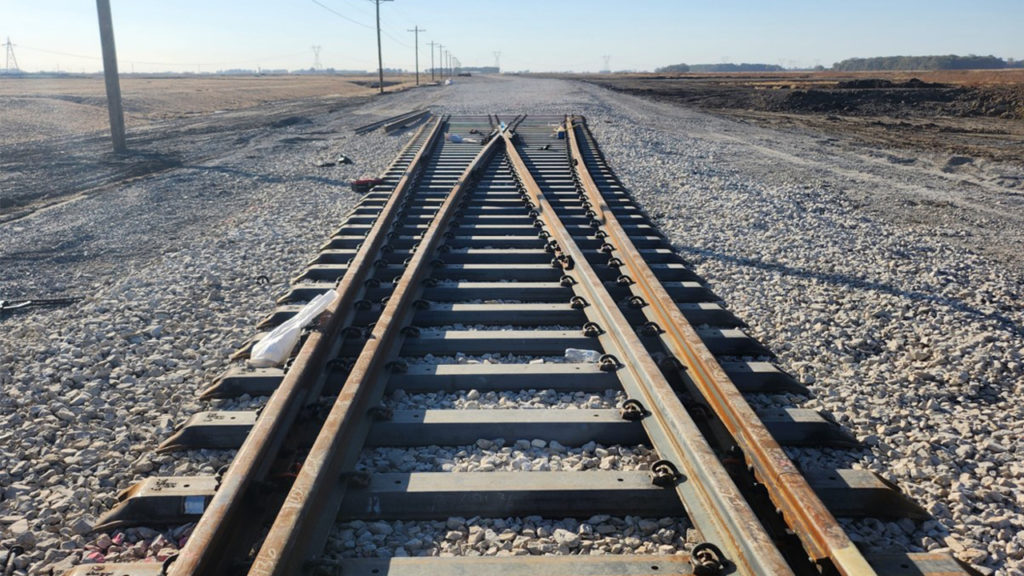
NARSTCO
Vice President of Sales Matt Violin tells Railway Age that the crosstie market “remains strong with continued growth throughout all areas of the railroad industry. Many rail operators are converting to NARSTCO steel ties and turnouts over alternative products due to their longer service life, ballast savings, consistent gauge holding capabilities and ‘green’ features. We continue to see activity throughout North America within the port and intermodal networks. The automotive industry, specifically related to EV development, has an extremely positive outlook with many opportunities for rail and ‘green’ rail products. The petrochemical industry remains strong with more facilities coming on line now and in the coming years.”
NARSTCO recently secured the largest steel tie and turnout order in company history for a Chevron Phillips Chemical project under construction in Orange, Tex. It also supplied steel ties and turnouts to a new steel mill for Big River Steel, a U.S. Steel company, in Osceola, Ark.
“NARSTCO’s products help the project team meet their goals by reducing their carbon footprint and utilizing recycled U.S.-made steel,” according to Violin. “The ability to build track faster with reduced ballast quantities and optimizing their total cost of ownership are all key aspects being considered.”
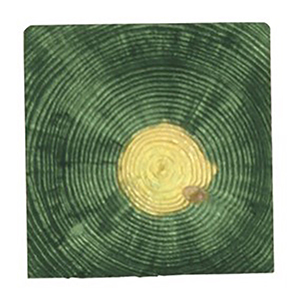
Nisus Corporation
“The current estimates suggest that the overall [wood crosstie] market is down from last year due to the lingering effects of the green tie shortage, with a projection of 18-19 million ties for this year vs. 21 million last year,” Eastern Region Sales Manager Jeff Thomas reports. “That said, we are seeing more softwoods like southern yellow pine enter the market as exports of hardwoods tick up.”
Nisus continues to see steady growth of its QNAP® copper naphthenate wood preservative product. “This trend holds true for the utilities with poles, as well as in the railway industry where we’ve seen especially strong growth with bridge ties, in particular,” says Dr. Mark Manning, Business Development Manager.
Nisus expects the QNAP growth trajectory to continue, “especially when considering the creosote shortages we’re hearing about from treatment plants and the restrictions on the marine shipping of creosote,” adds Dr. Jeff Lloyd, Senior Vice President, Innovation and Sustainability. Between that, he says, the EPA’s cancellation of wood preservative pentachlorophenol, “increasing environmental awareness and the wider array of disposal options for QNAP-treated wood at end of life, you can see why the demand for QNAP has been so high.”
The company is also seeing an increase in the use of borates, in general, due to the market trend toward softwoods, Thomas says.
What are customers looking for? “Cost is always a factor,” Thomas says. “That’s why we always stress what borates can do. Dual-treating ties with Cellutreat and QNAP dramatically extends their service life and reduces disposal costs. That makes a big difference in the railroads’ bottom line.” The company is currently developing strategies for dual-treating switch ties so they are available on demand, he says.
Additionally, Nisus is looking into methods for implementing “protection by design,” specifically through top covers for bridge ties to extend their life, investigating best practices for tie recycling and additional end of life uses, and carrying out multiple international field tests to support registration in Europe due to creosote restrictions, according to Lloyd.
Stella-Jones Inc.
Stella-Jones supplies more than 12 million pressure-treated wooden crossties per year. It offers not only railway ties and timbers for Class I, short line and commercial railroad operators, but also industrial products—including wood for railway bridges and crossings, marine and foundation pilings, and construction timbers—and customized services. Preservatives for mixed hardwood and oak include creosote, borate and copper naphthenate.
“Overall crosstie demand continues to remain strong as many of our Class I customers continue to take advantage of track time for program maintenance and to build new or extend existing sidings to improve service,” Vice President of Marketing George W. Caric reports. “Our short line and regional customers continue to take advantage of the 45G Tax Credit and Federal Railroad Administration CRISI grants to fund track improvements and new business opportunities for customers switching to rail for their transportation needs. Additionally, green tie production has started to improve over the past six months, and the company expects that trend to persist.”
Stella-Jones is eying capital projects to improve plant capacity and safety as well as ESG initiatives, according to Caric. It recently completed a 2,100-plus solar panel installation on two roofs of its Clanton, Ala., treating plant. This project was designed to cover 70% of the facility’s electricity needs. “In terms of CO2 emissions avoidance, this energy coverage is equal to 92,000 gallons of diesel consumed annually and marks a meaningful step in our road to decarbonization,” Caric says.
TieTek Global
In August 2022, EFG TieTek LLC, part of the EF Global Group, acquired TieTek Global and its related entities. The following month, TieTek Global participated in the InnoTrans trade show in Berlin, Germany, where interest in its composite crossties was “overwhelming,” says D. Elroy Fimrite, President and CEO of TieTek Global. “There is a significant movement globally to replace wood sleepers/crossties with a more sustainable and better performing product,” he reports. “TieTek sleepers/crossties have a quarter-century of solid performance, are composed of more than 80% recovered resources, and each sleeper/crosstie locks up more than 150 pounds/70 kilograms of carbon in a stable carbon vault. At the end of the 50-year installed life expectancy, the TieTek crosstie can be recycled 100% back into a new product, a truly circular solution. Recapturing waste plastic and waste rubber, the manufacturing of the TieTek composite products is a net carbon minus process, which produces essentially no waste, emissions or byproducts. No special equipment or railbed modifications are required to replace wood ties with the TieTek Composite crosstie.”
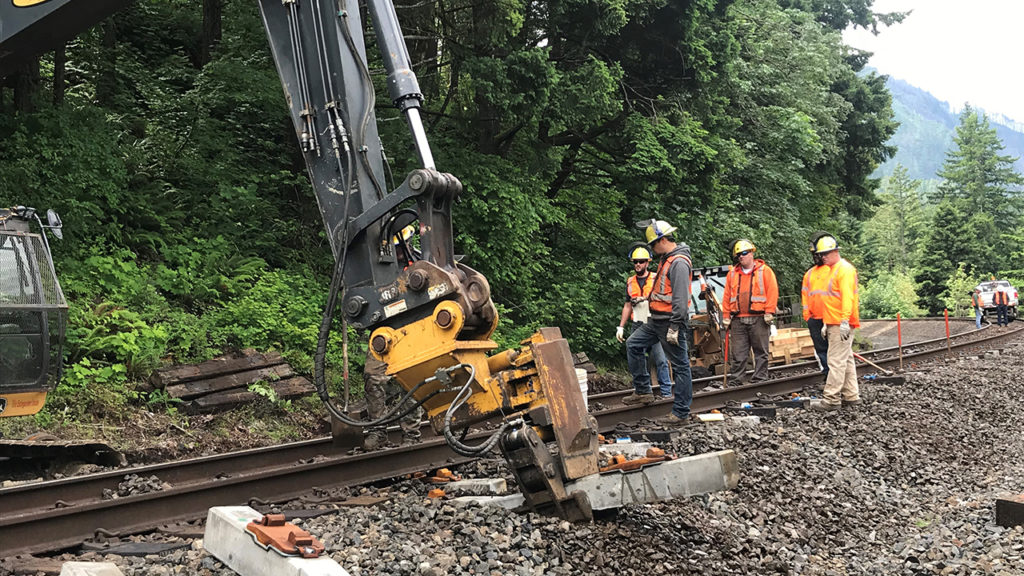
Voestalpine Railway Systems Nortrak
Nortrak, a vertically integrated design and manufacturing company, not only supplies concrete ties, but also produces in-house such components as ductile shoulders, plastic rail pads and insulators, and indented reinforcing wire. “Our customers demand the best quality with the lowest cost and by controlling our own supply chain we wring out inefficiencies to meet customers’ expectations in a very competitive environment,” Senior Vice President Strategy and Development Fixation John Stout says. He tells Railway Age that the company is seeing a modest recovery taking shape in the crosstie market, with a slight uptick in concrete tie and turnout demand as a result of capacity expansion and maintenance projects that had slowed due to the pandemic.
“We are optimistic about the long-term outlook for concrete ties as freight and passenger railroads look to increase the RAMS (Reliability, Availability, Maintenance and Safety) on their networks to increase revenue generating traffic and minimize the need to occupy the track for maintenance,” Stout reports. “In addition, difficulties hiring and retaining skilled track workers will likely persist making long-life/low-maintenance products like concrete ties a very attractive option.”
Nortrak’s Keyway Tie System, Stout adds, has gained wider adoption over the past year with multiple installations in the Pacific Northwest, along the Gulf Coast and in southeastern Canada. “All installations were completed in wood tie track where wide gauge was an ongoing maintenance and safety issue,” he says. “The Keyway Tie System immediately secured and stabilized the track gauge and since it has the same dimensions as a wood tie, it allows for a consistent track modulus with adjacent wood ties and can also be installed with typical maintenance-of-way equipment.”
The company has developed a specialized set of Keyway Transition Ties to bridge the transitions from fixed structures to open track. Stout says Keyway Transition Tie Sets “minimize the ballast breakdown at approaches to turnouts, open deck bridges, grade crossings and other structures that often lead to a dip in the track surface that result in high impacts on structures with accompanying maintenance and reduced service life of those high-cost assets.”
Vossloh Tie Technologies (VTT)/Rocla Concrete Tie, Inc. (RCTI)
VTT has been supplying ties across North America for more than 35 years. Its pre-stressed concrete ties are said to provide an improved track surface, alignment and gauge-holding performance; support high speed and heavy haul rail applications; and offer longer lifecycles with durability and resistance to weathering and corrosion.
The company tells Railway Age that 2023 started off with consistent demand as compared to previous years, with a slight uptick for specialty applications such as yards.
VTT recently introduced a newly engineered yard tie that it says was the result of Class I customer demand for a longer-lasting product. “The 102 Yard tie is an economically optimized tie and fastener combination designed with less reinforcement and material for yards and a variety of transit applications,” the company explains. “We believe the cost efficiencies we have driven into this new tie and fastener design makes it extremely competitive to plated wood ties, coupled with a much longer lifespan as compared to traditional ties, thus driving a compelling return on investment for both new yard construction as well as total yard rehabs.”
Wilvaco
To ensure crossties hold gauge and to extend their service life, Wilvaco offers wood tie plugging compound and concrete railseat repair and shoulder repair products. It also provides low-viscosity high modulus urethane for concrete structures. 2023 started off strong for annual m/w programs at the Class I’s, according to Rob Loomis, Vice President, Performance Products Division. With track time available and more workers in place, Wilvaco has had a busier first quarter this year than last.
The company’s goal is to help railroads reduce downtime, and its latest product, Spike Fast IJ-30, does just that. This insulated joint repair material cures in place and keeps the signal isolated, so the track stays open, Loomis says.
A growth area for the company is structural support, and among the products gaining traction are bearing pad repair, used at bridge approaches, and waterproofing for concrete and steel structures. Also, on the transit and rail yard side, Wilvaco more recently began offering a plinth repair product to hold fastener screws in place. It is used by such companies as Dallas Area Rapid Transit, Seattle’s Sound Transit and the Port of New Orleans.
While Wilvaco’s research and development efforts are “behind the curtain,” so to speak, Loomis says that the company is constantly working to simplify product application with the fewest possible steps. Innovation is key, according to Loomis, who also serves as Chairman of the Awards Committee for REMSA, which in 2022 debuted an innovation award.
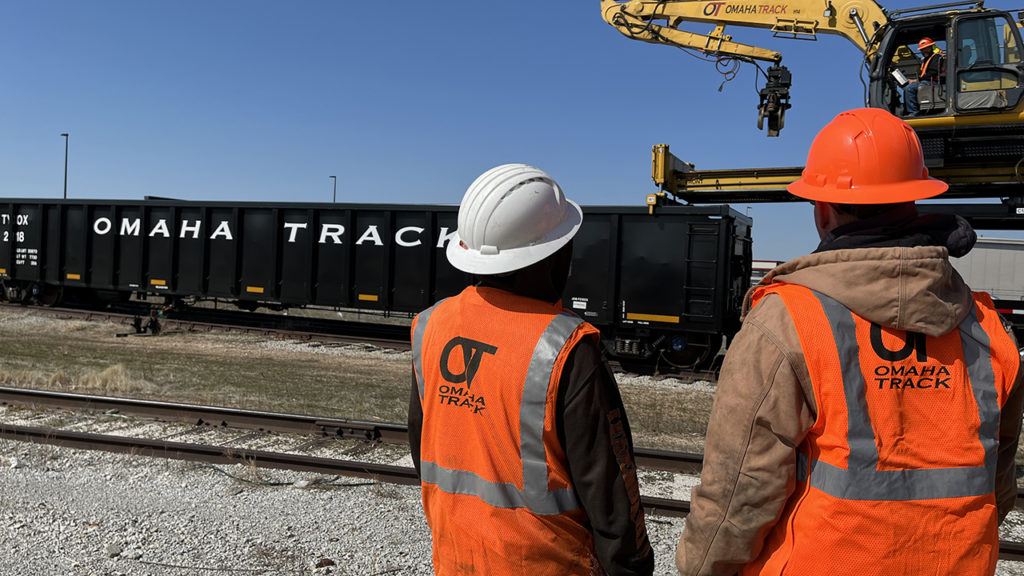
Omaha Track (OT)
Omaha Track is celebrating 40 years of service this year. It has evolved from a retail landscape tie sales facility with three employees to a recycled railroad materials and services provider with 300 employees. The company tells Railway Age that it processes more than three million wood crossties per year, with 70% being recycled as biomass and the remainder repurposed as railroad infrastructure or used in landscaping. OT has also recycled and repurposed more than seven million tons of steel rail and other track materials since 1983.
OT is at work with universities and other industries to find environmentally friendly tie disposal options, according to President Jeff Peterson. “This is a longer-term goal, as the technologies are difficult to scale in an economically viable way,” he says. “We are optimistic about the potential for green alternatives such as biogas, biochar, woodgas and biocracking.”
The company continues to explore the potential for using ground ties as a fuel source for other industries, and has had some success with cement manufacturers, reports Peterson, who notes that OT is “optimistic” about this market and is researching and developing other ideas. It is also teaming with equipment, engineering and manufacturing companies to develop a new product to improve the tie-pickup process.



